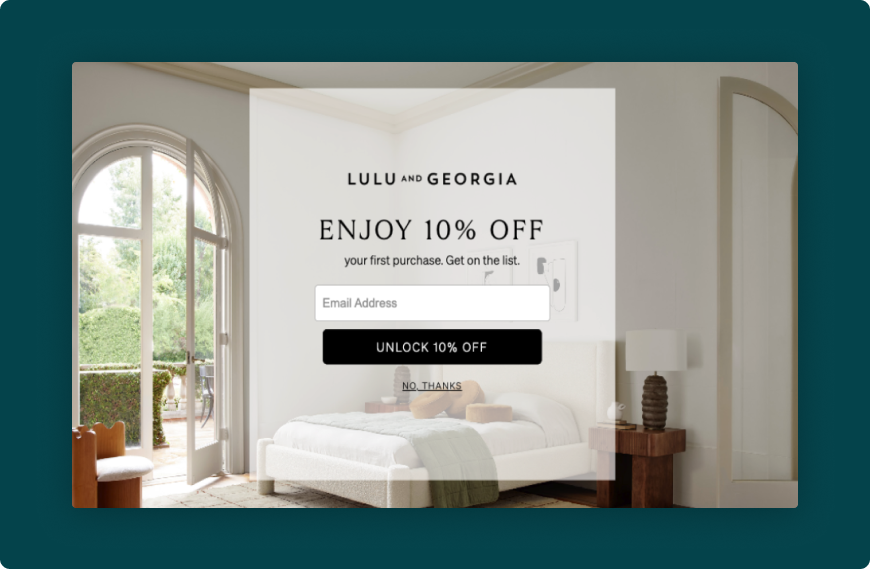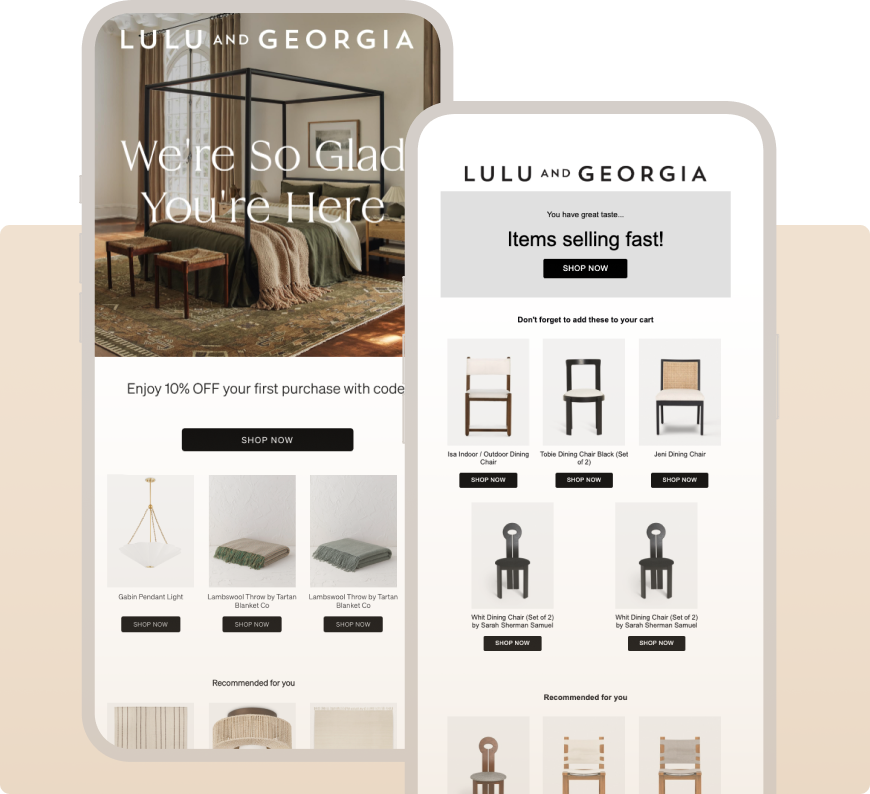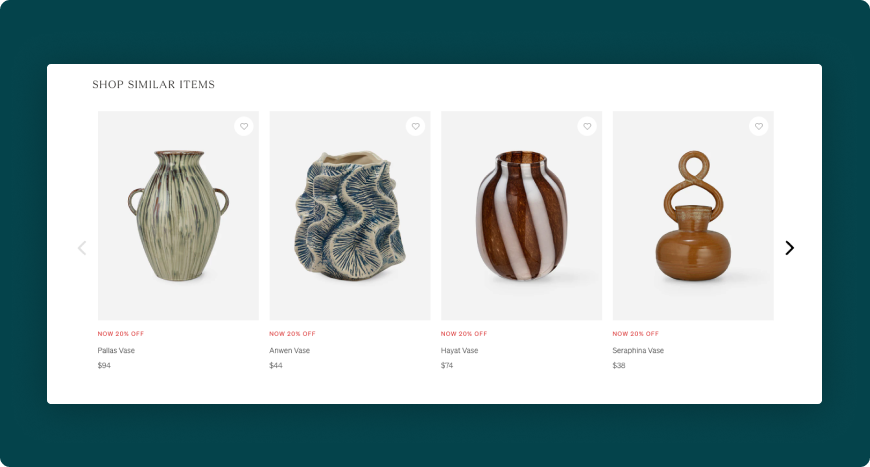Lulu and Georgia Doubles Repeat Buyers in Just Nine Months

Home goods retailers enjoyed record site visits and online sales in 2020 as stay-at-home mandates had people itching to spruce up their spaces. But those numbers dropped as shoppers – and everyone else – moved back out into the world. Meanwhile, inflation and interest rates slowed down home buyers, a critical part of home goods brands’ customer base.
Post-pandemic, digital home goods retailer Lulu and Georgia was looking to boost its sales volume. In August 2022, they started working with Bluecore. The goal: transform casual shoppers into lifetime loyalists. And in just nine months, they succeeded. Lulu and Georgia increased their number of first-time buyers by 133%. They increased repeat purchases by 229%. And their email subscriber base grew by 5%.
Moving customers through the lifecycle, from unidentified shopper to brand loyalist
Bluecore’s customer movement framework starts with identification. If you can’t identify a customer and reach them through your owned channels – such as email and SMS – it’s almost impossible to send them messaging that accurately responds to their behavior while they are still in a shopping mindset.
Lulu and Georgia’s website was attracting hundreds of thousands of visitors per month, but there were opportunities to identify website shoppers, convert more first-time buyers, and increase repeat purchase rates.
Lulu and Georgia combined Bluecore’s identification engine with their own customer and product engagement data, creating new buying moments that went beyond home purchases and market-dependent trends.

One of the first steps was to define exactly what a loyal, profitable customer looked like. With help from Bluecore, Lulu and Georgia pursued lookalike VIP audiences in paid media. By driving shoppers who had the highest likelihood of purchasing to the site, the brand was able to better manage their acquisition costs. Once shoppers were on the site, Lulu and Georgia used Bluecore’s email capture to quickly grow their opt-in subscriber list by 5%. That enabled them to continue identifying as many shoppers as possible, setting a strong foundation for personalization and customer movement.
Now, these new subscribers needed to be encouraged toward their first purchase. But home goods don’t tend to be spontaneous purchases. In fact, the average shopper researches these products at least six times before buying.
That meant doing some analysis to learn which products are the best at driving both first-time and repeat buyers.
To pull this off at scale, Lulu and Georgia focused on automating hyper-relevant messages that would respond to specific customer signals. Soon, these customized responses accounted for 40% of the brand’s email revenue despite making up less than 5% of their email volume.
While many brands send messages in response to cart and browse abandonment, Lulu and Georgia found success by responding to inventory signals as well. Real-time changes to the product catalog, such as new arrivals and price drops, were also important signals. In response, Lulu and Georgia sent relevant emails to precisely those shoppers who had exhibited interest in those specific products.

Driving repeat purchases with predictive abilities
Retailers know loyal customers are the best customers, which makes it imperative to increase the number of active and loyal buyers from within your existing customer base. Lulu and Georgia sought to increase that pool, an ambitious but feasible goal.
Activating predictive models within the Bluecore platform is as simple as pointing and clicking within the platform’s audience and template builders, allowing retailers to easily launch campaigns with 1:1 recommendations that are most relevant for each shopper and reflect the items they’re most likely to purchase.
With these predictive models, Lulu and Georgia communicated with shoppers based on their price sensitives, preferences related to colors, styles, materials, and predicted preferences for categories and products.

The retailer leaned on three models in particular: next best purchase, category affinity, and discount affinity. By combining all three, Lulu and Georgia could include personalized recommendations in nearly all of their emails.
- After identifying a first-time purchaser, Lulu and Georgia built an email with a unique offer, as well as a predicted next purchase and additional recommendations based on category affinity.
- The discount affinity model helped drive conversions while also preserving margins by offering discounts or free shipping only to customers who needed them to convert. Lulu and Georgia used this model both in email communications and within onsite modals.
Lulu and Georgia had traditionally segmented one-time buyers according to past purchases. This illustrates the typical gap between high-consideration home goods purchases. How often does the average shopper buy a couch?
Bluecore data found that with each additional purchase — even items with lower price points, such as lamps — shoppers become even more likely to continue buying from a brand. The likelihood that a first-time shopper will make a second purchase is 23%, and the likelihood that a two-time shopper will make a third purchase is 37%. And it keeps going up from there.
Lulu and Georgia also created a rewards trigger, which sends shoppers 1:1 credit reminders — including the dollar amount of the available reward — along with relevant product recommendations. This contributed to a 27% increase in revenue per email.
What’s next for Lulu and Georgia? The retailer plans to keep driving its 1:1 messaging home, scaling their wins from the past nine months while creating – and moving — even more loyal customers.

